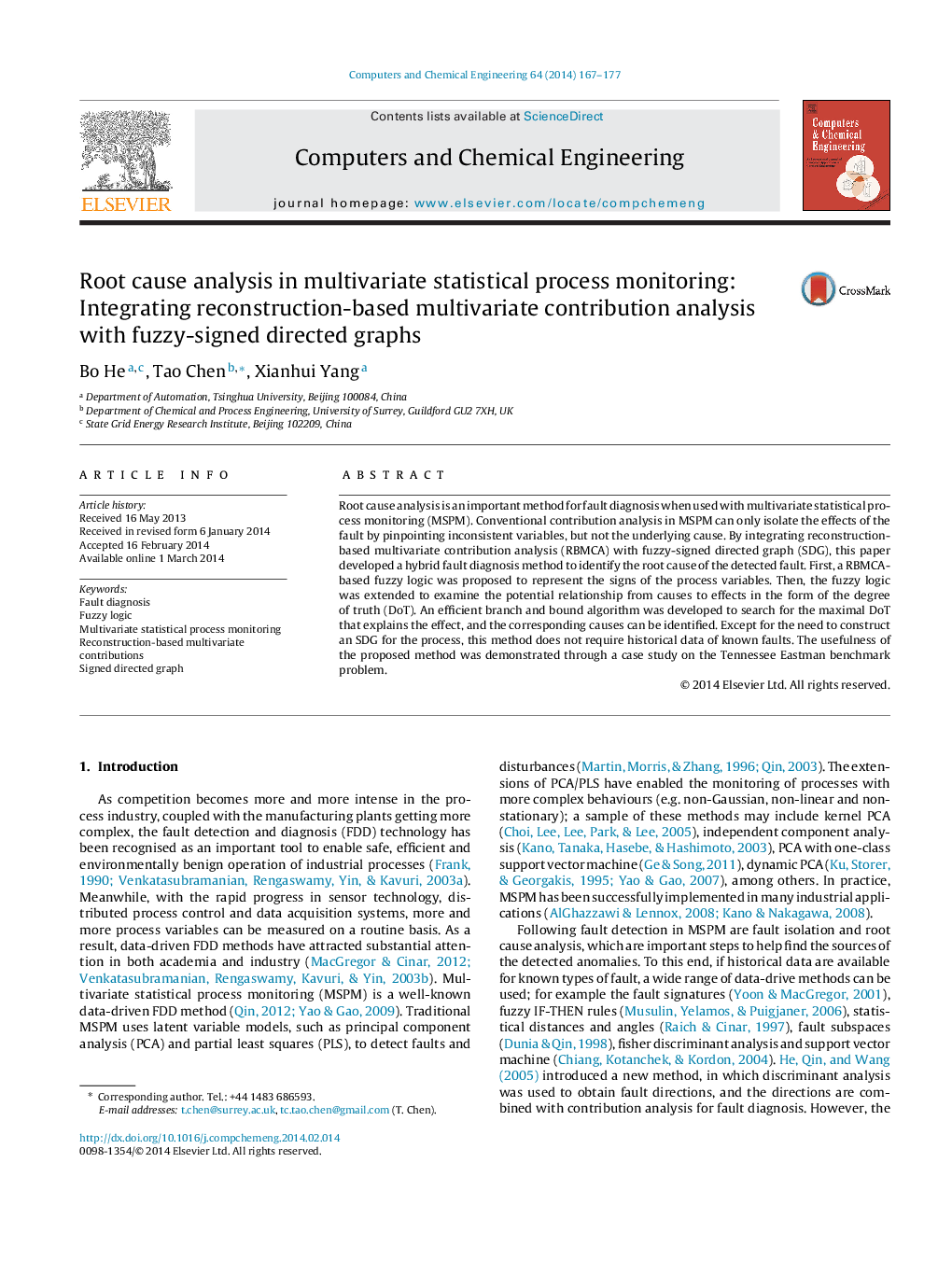| کد مقاله | کد نشریه | سال انتشار | مقاله انگلیسی | نسخه تمام متن |
|---|---|---|---|---|
| 172374 | 458539 | 2014 | 11 صفحه PDF | دانلود رایگان |
• A root cause analysis method is presented to diagnose the process fault detected by statistical process monitoring.
• The method integrates reconstruction-based multivariate contribution analysis with fuzzy-signed directed graph (SDG).
• The isolated faulty variables are fed to fuzzy-SDG to determine the likely path from cause to effect.
• A branch and bound algorithm was developed to implement the proposed method in an efficient way.
• The usefulness of the method was demonstrated through a case study on the Tennessee Eastman benchmark problem.
Root cause analysis is an important method for fault diagnosis when used with multivariate statistical process monitoring (MSPM). Conventional contribution analysis in MSPM can only isolate the effects of the fault by pinpointing inconsistent variables, but not the underlying cause. By integrating reconstruction-based multivariate contribution analysis (RBMCA) with fuzzy-signed directed graph (SDG), this paper developed a hybrid fault diagnosis method to identify the root cause of the detected fault. First, a RBMCA-based fuzzy logic was proposed to represent the signs of the process variables. Then, the fuzzy logic was extended to examine the potential relationship from causes to effects in the form of the degree of truth (DoT). An efficient branch and bound algorithm was developed to search for the maximal DoT that explains the effect, and the corresponding causes can be identified. Except for the need to construct an SDG for the process, this method does not require historical data of known faults. The usefulness of the proposed method was demonstrated through a case study on the Tennessee Eastman benchmark problem.
Journal: Computers & Chemical Engineering - Volume 64, 7 May 2014, Pages 167–177
